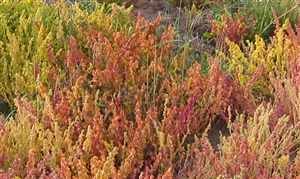Kañiwa (Chenopodium pallidicaule), Canihua
Main Facts about Kañiwa

Using Kañiwa
Unlike quinoa Kañiwa doesn’t contain saponin (you don’t need to rinse it thoroughly before cooking); it has more protein, iron, magnesium, and calcium than quinoa. Kañiwa is gluten-free and an excellent source of antioxidants. Kañiwa carries the same B vitamins and minerals as whole-grain wheat. Being a plant food, it completely lacks in saturated fat and is cholesterol-free.Kañiwa is a remedy for: Constipation
Cooking with Kañiwa
It is cooked similarly to quinoa (1 cup of Kañiwa to 2 cups of water; simmer for 15 to 20 minutes until the seed is soft and the liquid has been absorbed) and it also tastes better if toasted before cooking. The grain does not need to be rinsed prior to cooking.| Juniper |
Kava-kava
|